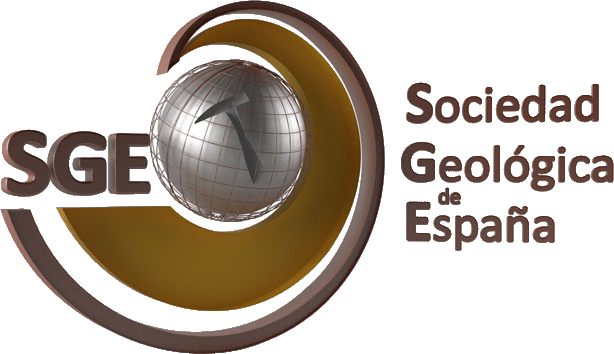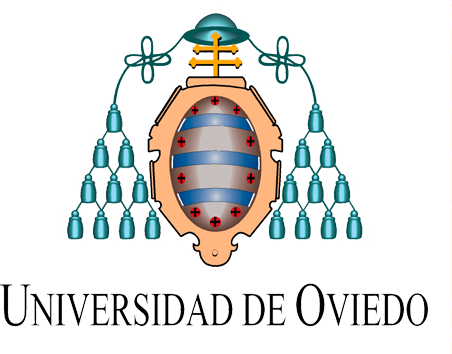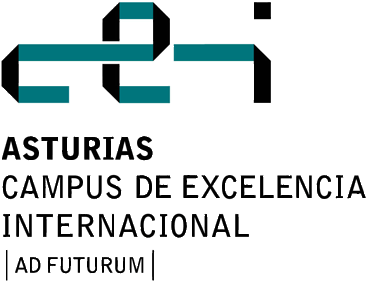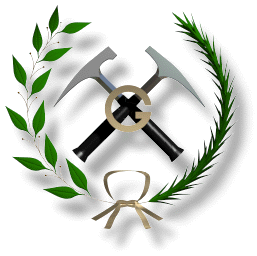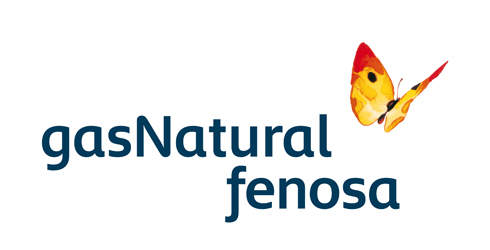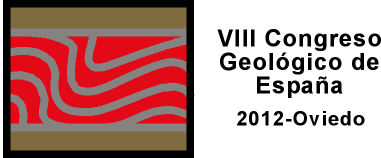
VIII Congreso Geológico de España
| Español |  |
English |  |
| Contact
us |
| Symposia |
Round Tables |
| Home |
| Organization |
| Scientific
Programme |
| Fieldtrips |
| Registration |
| Accomodation |
| For Authors |
| Congress Calendar |
| Other Activities |
 Fitzroy (Chaltén) Massif (Photo: N. Heredia). Symposium Andes. |
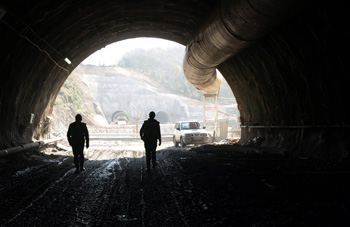 Tunnel of Teso and twin tunnel of Sotiello (Pajares high speed link) (Photo: C. López). Fieldtrip A3. |
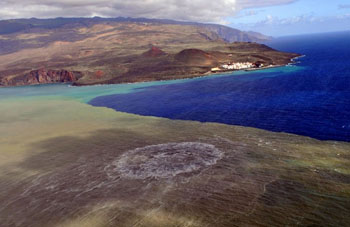 Submarine eruption off La Restinga (El Hierro, Canary Islands) (geological hazards). |
 Reefal deposits in the upper part of the lower Devonian Rañeces Group (overturned succession, Arnao) (Photo: M. Arbizu). Fieldtrip A1. |
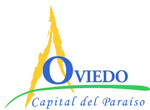 |
Oviedo Touristic info |
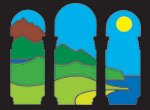 |
Asturias Touristic info |
The Scientific Programme of the Congress consists of the Scientific Sessions, Symposia, Round Tables, and Invited Conferences.
Scientific Sessions
On the basis of the preliminary outline of sessions and of the participants´ suggestions received through their preliminary registration, the provisional programme of scientific sessions is as follows:
Preliminary outline of sessions (First Circular):
- Climate: past, present and future.
- Teaching and History of Geology.
- Stratigraphy and Sedimentology.
- Geophysics.
- Structural Geology and Tectonics.
- Marine Geology.
- Geomorphology.
- Geochemistry, Petrology and Vulcanology.
- Hydrogeology.
- Geological Engineering and Geotechnics.
- Mineralogy.
- Palaeontology.
- Geological Heritage and Geodiversity.
- Geological Resources.
- Natural Hazards, Land Management and Environmental Geology.
- Recent Tectonics and Palaeoseismicity.
- Remote Sensing and Geo-Informatics.
- Miscellaneous.
- Geochronology.
- Paleomagnetism (Magiber VII).
Symposia
After the participants´ proposals, the provisional outline of symposia is as follows:
| S1. | Geodynamical processes along a convergence zone: the case of the Western Mediterranean. | A. Crespo Blanc (Univ. de Granada), M. Comas (Instituto Andaluz de Ciencias de la Tierra, CSIC-UGR, Granada) |
| The western Mediterranean region is an exceptional natural laboratory for the study of the geodynamic processes related with the convergence between the African and European plates from Cenozoic onwards. It is now well-know that our understanding of the tectonic evolution of this region can only emerges from multi-disciplinary studies. Therefore, contributions from all disciplines --geology, geophysics and geodetics-- that study different aspects of the evolution of this region are welcome. These data will nourish probably controversial but surely fruitful discussions. | ||
| S2. | Annual symposium of the Topo-Iberia Project. | J. Gallart (IJA – CSIC Barcelona), F. J. Alvarez Pulgar (Univ. de Oviedo), R. Rodríguez Fernández (IGME Madrid) |
| Details on this symposium will be added soon. | ||
| S3. | Geological hazards in continental and marine settings. | F. M. Alonso Chaves (Univ. De Huelva), D. Casas Layola (IGME Madrid). |
| Scientific understanding of all the processes and events that may result in geological hazards is key to implementing hazard management protocols. Exhaustive study of all those mechanisms and processes, operating in both continental and marine seetings and at different temporal and spatial scales, may result in improved management efficiency and in lowered economic and human costs associated to geological risks. The recent events of the Lorca earthquake, the Tōhoku tsunami or the El Hierro submarine eruption reveal that extreme events with a severe impact on human societies are linked to continental and marine settings, being both worthy of specific attention by the scientific community. | ||
| S4. | Contourite depositional systems: their oceanographic, palaeo-oceanographic and sedimentary implications and influence over slope stability and resource explotation. | F. J. Hernández Molina (Univ. de Vigo); D. Stow (Heriot-Watt University, Edimburgh), H. Matías (REPSOL Madrid). |
| Contourite processes exert a significant impact on continental margin and abyssal plain sedimentation. Contourite features comprise individual contourite drifts and erosional elements, which form together extensive and complex Contourite Depositional Systems (CDSs). Their study will yield important data for stratigraphic, sedimentological, palaeoceanographic and palaeoclimatological research, as well as improved understanding of deep marine geohabitats, mineral and energy resources. This symposiums is aimed at providing a scientifically stimulating and socially enjoyable atmosphere to discuss results and ideas related to contourite systems worldwide and should be of interest to both academia and industry geoscientist. | ||
| S5. | Geology of the Andean
Cordillera and its foreland. |
N. Heredia Carballo (IGME Oviedo), F. Colombo Piñol (Univ. de Barcelona), J. García- Sansegundo (Univ. de Oviedo). |
| The Andes constitute the best example of subduction-related belts. This multidisciplinary symposium aims to bring together the last advances in their knowledge. The symposium will also deal with the Andean foreland, where they lie the retroarc foreland basin and several pre-mesozoic basement blocks that were re-activated during the Cenozoic Andean orogeny, which in turn resulted in the present-day configuration of the cordillera. Another topic of interest is the paleozoic evolution of the western margin of South America. It formed part of one of the Gondwana margins at that time and was the site of the accretion of several terranes, a process which influenced the present-day geometry of the Andes and represent the transition to the modern subduction stage. An ultimate objective of the symposium is to bring together different research groups to promote collaboration and sharing of scientific results. | ||
| S6. | Mesozoic extension between Iberia and Europa plates. | E. Iriarte Avilés (Lab. Evolución Humana, Univ. de Burgos), L.M. Agirrezabala y M. López Horgue (Univ. País Vasco) |
|
Over the last years, new data
and geodynamic models have appeared that deal with the
tectono-sedimentary and
thermo-magmatic processes related to the extension between the Iberian
and European plates. This has rekindled the scientific discussions
among
the geoscientists from several disciplines working both in the northern
and southern
slopes of the Pyrenees. Taking advantage this situation, this symposium
seeks to
gather multidisciplinary contributions studying both the features of,
and the
geological processes operating at the Iberian/European plate boundary
during the Mesozoic. Its ultimate aim is to boost the scientific
discussion,
to update our knowledge on the topic and to design strategies to solve
the
existing problems and deficiencies in present knwledge. Main
topics to be dealt with are: the stratigraphy and tectono-sedimentary evolution of the sedimentary basins from the pyrenean domain, the structure of these basins and the extensional geodynamic processes operating along the Iberian/European plate boundary, and the events and the thermo-magmatic features in relation to the crustal extension. |
||
| S7. | The past, present and future of hydrocarbon exploration, with an emphasis on Spain: trends and new applications | C. Macellari (REPSOL Madrid), J.R. Navarro Comet (CEPSA Madrid), S. Torrescusa Villaverde (AGGEP) |
| This symposium is focused on the history and evolution of hydrocarbon exploration and on both its future prospects and challenges, including the application of the information obtained, with special emphasis on Spain. Amongst the points of interest, special attention will be paid to unconventional resources and to deep-water exploration. Key topics will also include the application of information generated by hydrocarbon exploration to knowledge of the subsurface geology of Spain and to new applications of this knowledge to CO2 and CH4 storage and also in geothermal energy. | ||
As with the scientific sessions, only those symposia attracting more than 10-14 approved oral communications will be held. The final programme of symposia will be announced after the deadline for contribution submission.
Round Tables
After the participants´proposals, the final programme of round tables is as follows:
| MR1. | Divulgación de la Geología: pasado, presente y futuro (Outreach in Geology: past, present and future). | A. Crespo Blanc (Univ. de Granada). |
| This round table aims to publicize the main actions in geological outreach that are being made in Spain in several fields. First, the role of museums will be presented by the Director of the Museo Geominero of the Instituto Geológico y Minero de España (IGME, Geological Suvey of Spain), Isabel Rábano, and the Director of the Fundación Conjunto Paleontológico de Teruel-Dinópolis, Luis Alcalá. The second field pertains to the scientific societies, such as the Sociedad Geológica de España (SGE). Ana Crespo Blanc, its president, will detail the SGE outreach activities nationwide, in particular Geolodía. Another important field corresponds to the natural areas. It will be presented Luis Carcavilla, IGME, author of several geological guides. Finally, chairman of theAsociación Española para la Enseñanza de las Ciencias de la Tierra (Spanish Association for the Teaching of Earth Sciences) will introduce the Olimpics in Geology, an excellent way to promote geology amongst the youngsters, potential future geologists. | ||
| MR2. | La enseñanza de la Geología en España (Teaching Geology in Spain: state of the art). | A. Calonge (Univ. De Alcalá). |
| Details on this round table will be added soon. | ||
| MR3. | Gestión de emergencias frente a peligros naturales. El papel del geólogo (Natural hazards and disaster management: the role of the geologist). | R.M. Mateos Ruiz (IGME Palma de Mallorca). |
|
Both
the earthquake in Lorca (Murcia, May 2011) and the volcanic crisis in
El Hierro (Canary Islands, ongoing since July 2011) have shown that
natural risks related to the Earth’s dynamics are very relevant
concerns in our country. Nevertheless, although both phenomena are
basically geological, the figure of the geologist and their role in
these emergencies went largely unnoticed by the population in general. Those organisations with geologists on their staff play little role in the planning and management of early warning systems for earthquakes or volcanic activity. This has in turn led to the sidelining of Geology as a Science, and especially of the important contributions its experts made during these situations of risk. We should ask ourselves just how this has come about. This roundtable, which includes experts who have experienced Lorca and El Hierro firsthand, aims to analyse the role played by geologists in both cases, their real contributions to the managing of the emergency and the willingness to include their opinions during the decision-making process. Our goal is to establish measures and proposals to overcome our short sightedness, to learn from past mistakes and to face the future with optimism. |
||
| MR4. | Aportes de la Geología en los nuevos enfoques sobre gestión de riesgos naturales y ambientales (The contribution of Geology to the new approaches about the natural and environmental risk management). | M. Zango Pascual (Univ. Pablo Olavide). |
| In our global and changing world, the role of geology is sometimes overlooked and seems to be in decline. This takes place despite gesociences are closely related with the nature of many of the major problems confronting our society, and with the approaches to face them. In particular, the contribution of geologists to risk reduction for hazards of natural, environmental (s.l.), mixed or complex nature is essential but not always aknowledged. This round table discusses some of these topics through the experience of geoscience professionals and researchers working in fields such as Climate Change, Civil Protection and Emergency Services, and Environmental Hazards and the related specific Insurances, Regulatory advances and Hazard Management. These contributions will be completed with a broader approach to Hazard Management related to Human Rights policies and to the role and effects of the environment and natural disasters on the Sustainable Development. | ||
| MR5. | Presente y futuro de la Cartografía Geológica (Present and future of geological mapping). | R. Rodríguez Fernández (IGME Madrid). |
| Details on this round table will be added soon. | ||
| MR6. | Problemática actual de la conservación del patrimonio geológico mueble (Present-day problems in the preservation of portable geological heritage). | E. Díaz (IGME). |
| Since 2007, the geological heritage is considered as a part of the natural heritage by the laws and each Autonomous Community of Spain must implement its rules and make its inventory according to the recently adopted Strategic National Plan for Natural Heritage. The development of this legislation collides with the management of the portable geological heritage (i.e. fossils, minerals, meteorites and other rocks) that has been implemented so far. The objective of this round table is to provide an overview of the historical background, the current status and the future prospects of the management of the portable geological heritage. A debate on contrasting points of view with the active participation of attendants will be encouraged. | ||
| MR7. | Aplicaciones cronológicas del Paleomagnetismo y Magnetismo de rocas; estado actual y nuevas perspectivas en Iberia (Chronological applications of Palaeomagnetism and Magnetism in rocks: state of the art and new perspectives in Iberia). | J.J. Villalaín (Univ. de Burgos) y R. Soto Marín (IGME Zaragoza). |
| The Commission on Paleomagnetism of the SGE proposes a round table to discuss relevant aspects over the several chronological applications of paleomagnetism and rock magnetism. In addition to magnetostratigraphy and archaeomagnetism, these applications include the study of magnetic properties of rocks and minerals and their relation to environmental changes. The round table will be composed of four speakers, who are internationally recognized researchers and experts in those fields. Topics to be dealt with comprise (i) the methodological aspects of magnetostratigraphic dating, (ii) the Pyrenean domain as one of the most studied cases of magnetostratigraphy dating, (iii) the recent global and regional models of secular variation and their application to archaeomagnetic dating, (iv) the geochronological applications of environmental magnetism and (v) the current debate on the possible relationship between changes in EMF and paleoclimatic variations.The development of these techniques in Iberia and their future prospects will be also discussed in this round table. | ||
| MR8. | Los programas de perforaciones científicas IODP (oceánico) e ICDP (continental) en España: Progresos y perspectivas (The IODP (oceanic) and ICDP (continental) drilling programmes in Spain: Advances and prospects). | M. Comas y C. Escutia (Instituto Andaluz de Ciencias de la Tierra, CSIC-UGR, Granada - Comité Científico IODP/ICDP-España). |
| Details on this round table will be added soon. | ||
| MR9. | El futuro de la profesión de geólogo y sus especialidades: Progresos y perspectivas (The future of the geologist profession and its specialities: Advances and prospects). | L. Suárez Ordóñez(ICOG, Madrid) |
| Details on this round table will be added soon. | ||
| MR10. | Geología y vino (Geology and wine). | M. Yenes Ortega (Univ. Salamanca) |
| What does geology have to do with wine, except that many geologists like to enjoy a good wine? The production of wine and its quality depends, among other factors, on the rocky substrate and the type of soil developed over it. In fact, strains of the same age, variety and ripeness, cultivated by the same grower with the same techniques can lead to different levels of production and quality depending on the geographic area where farming is done. This is due to two key factors influencing the process: climate and geology. The soil where the vine is located and from which the plant receives its nutrients is the result of the weathering process of a given rock over a period of time and under given weather conditions. In this workshop we shall see some examples of how geology affects the practice of viticulture, both as regards the most suitable areas for planting vineyards, and the quality of the wines obtained. | ||
Invited Conferences
Three Invited Conferences by well-known specialists are planned. They will deal with some "hotspots" of the Scientific Sessions:
Dr. Alberto Marcos Vallaure: Investigando en Geología: del Manto de Glarus a la Tectónica de Placas (Searching in Geology: from the Glarus Nappe to Plate Tectonics).
Dr. Heather Stoll: Adaptación geólógica al CO2: productividad marina, meteorización continental y adaptaciones algares (Geological adaptation to CO2: marine productivity, continental weathering and algal adaptations).
Dr. Juan Manuel García Ruiz: Cristales gigantes de Naica: La ciencia que esconde la belleza (The giant crystals of Naica: beauty behind science).
Scientific Secretariat and Correspondence:
VIII Congreso Geológico de España
Dpto de Geología. Universidad de Oviedo
C/ Arias de Velasco s/n
33005 Oviedo, España
cge2012 at geol.uniovi.es
Technical Secretariat:
Fundación Universidad de Oviedo (FUO)
(Roberto J. González Fernández, Adriana Suárez Paredes)
C/ Principado, 3, 4º. 33007-Oviedo
Tlf:+34 985.104.935/36 Fax: +34 985.104.928
roberto.fuo at uniovi.es, adriana.fuo at uniovi.es
